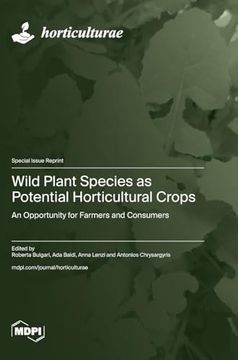Share
Wild Plant Species as Potential Horticultural Crops: An Opportunity for Farmers and Consumers (in English)
Bulgari, Roberta ; Baldi, Ada ; Lenzi, Anna (Author)
·
Mdpi AG
· Hardcover
Wild Plant Species as Potential Horticultural Crops: An Opportunity for Farmers and Consumers (in English) - Bulgari, Roberta ; Baldi, Ada ; Lenzi, Anna
$ 61.24
$ 76.55
You save: $ 15.31
Choose the list to add your product or create one New List
✓ Product added successfully to the Wishlist.
Go to My WishlistsIt will be shipped from our warehouse between
Monday, July 15 and
Tuesday, July 16.
You will receive it anywhere in United States between 1 and 3 business days after shipment.
Synopsis "Wild Plant Species as Potential Horticultural Crops: An Opportunity for Farmers and Consumers (in English)"
There are about 30,000 plant species that are considered edible, but at present, very few of them are crops grown or cultivated on a commercially significant scale. On the other hand, there are several plants or their parts (leaves, shoots, fruits, seeds, hypogeal organs, and flowers) that are collected in the wild and consumed as raw or cooked food. Ethnobotany may offer a source of inspiration for agriculture, as wild edible species have the potential to lead food systems to be healthier, more sustainable, and resilient to climate change. Good tolerance to several abiotic and biotic stresses, as well as high nutritional value and excellent nutraceutical properties, are common traits of wild plants, making them promising candidates as new crops. Novel approaches for the outdoor/indoor cultivation of wild or underutilized species are needed to provide new opportunities for growers to produce new food categories, which would be particularly appealing to modern consumers. Cultivating wild species is also a way to preserve ethnobotanical heritage and promote genetic diversity. Furthermore, the cultivation of food plants normally gathered in the wild could reduce the health-related risks associated with pollution and biological contamination.

